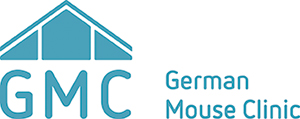Immunology
Introduction
Ultimate goal of the Immunology Screen in the German Mouse Clinic is to identify mouse mutant lines, which can serve as representative models for specific human immunological diseases (chronic inflammatory diseases, autoimmune diseases, immune-deficiencies, defects in protective immunity).
Baseline immune status
In order to identify potential mutant genes that are related to human immune disorders, within the standard pipeline we evaluate the integrity of immune cell composition via flow cytometric analysis as well as monitor the profile of immunoglobulin subclasses in the peripheral blood of mutant mice.
- Flow cytometry:
We determine the frequencies of main leukocyte subsets: T cells, B cells, granulocytes, NK cells, NK T cells and monocytes. Furthermore, we analyze subpopulations defined by the expression of CD4, CD8, CD25, CD44, CD62L, gamma delta TCR and Ly6C (on T cells), IgD and MHC class II (on B cells), and CD11b (on NK cells). - MSD:
Our platform allows the measurement of the levels of the immunoglobulin isotypes: IgG1, IgG2a, IgG2b, IgG3, IgA, IgM - ELISA:
The occurrence of auto-antibodies is measured by determining the levels of anti-DNA antibodies, and anti-immunoglobulin antibodies (=rheumatoid factor)
Hypothesis-driven analyses
Flow cytometric analysis of lymphoid organs
Subsequently, identified aberrant phenotypes attributed to the immune system can be further characterized by application of detailed hypothesis-driven analyses of lymphoid organs. We have established a series of standardized secondary examinations that comprise flow cytometric analyses of primary (bone marrow, thymus) and secondary (spleen, lymph nodes) lymphoid organs, and allow identification of a broad range of cellular parameters: T cell subsets in the thymus undergoing different maturational stages; hematopoietic stem cells, lineage progenitors and developing B cells in the bone marrow; a vast variety of subpopulations derived from lymphocytes and myeloid cells in spleen and lymph nodes.
Immune challenge
In many cases, phenotypic screening based on the surface maker signature alone is not able to estimate the severity of the immunologic defect. Hypothesis-driven in vivo challenges, like infection with intracellular bacterium Listeria monocytogenes, provide detailed insights into the quality of innate and adaptive immune functions. Listeria has been widely used as laboratory mouse infection models with predictable response patterns. It induces an inflammatory response that substantially restricts bacterial growth and is essential for early survival of infected mice. Assessment of bacteria loads within three days after Listeria infection represent a sensitive readout for the competence of innate immunity. Competent adaptive immune system is detectable around day seven post infection. The Listeria-specific CD8+ T cells are promoted to reach peak expansion and secrete effector cytokines, which are crucial for bacterial clearance. In order to evaluate long-term protective immunity governed by T cell-mediated immune responses, mice are first immunized with a low dose of Listeria monocytogenes followed by a secondary rechallenge with a high-dose infection within the memory phase several months later. Antigen-specific CD8+ T cells can be analysed in more detail via utilization of the MHC-I multimer technique. Moreover, additional characterization of effector and memory surface markers as well as cytokine production can be examined in response to restimulation of specific antigenic peptides.

